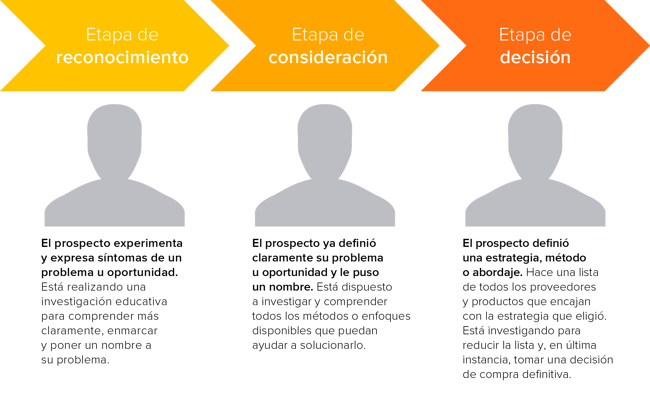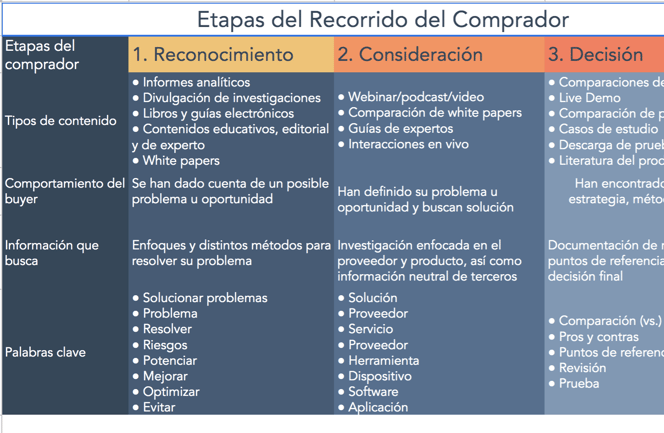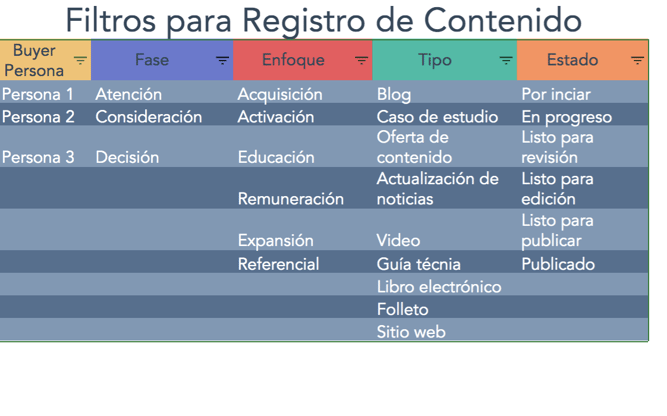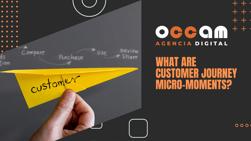Index Content
The customer journey is the buyer's journey, i.e. the different stages that a person goes through from recognising a need to buying a product or service, including recommending it to others. It is therefore the step of becoming a promoter or a customer, starting from the role of prospect.
The stages of this customer journey are:
- Recognition: the consumer is aware of a need or problem
- Consideration: the process of researching between different purchase options
- Decision making: the buyer chooses one of these options and makes the purchase

At the same time, it is a journey that is undertaken by both a potential customer and a regular or promoter, because new needs are constantly arising. In other words, it is not a one-time journey, but occurs with every need. Moreover, a person who has already bought a product from a company may re-evaluate other options the next time he or she feels the same need.
Each customer has a different level of understanding of the product or service and therefore they are at different stages or, directly, they begin to know the company at a more advanced stage. It is an internal task to detect at what point each of them is in order to act accordingly and adapt your communication with them in an individualised way.
The main objective for the company to study the buyer's journey is to create effective communication channels with each of the customers. To do this, given the number of customers and stages of the journey, as well as the particularities of each of them, the most effective way is to create a template to be able to carry out this communication in the most effective way possible.
How to create a template:
First of all, the customer journey, its stages and how many customers or buyer personas the company will work with must be known. The customer journey is a process that goes from the first impression about the company to the purchase, so many teams, departments, strategies and sectors of the company are involved in it. It is therefore essential that everyone has access to this template, to have the same information and thus facilitate and streamline the processes.
The buyer journey template consists of a table or tables, the first of which lists the different stages of the journey in the rows and some interesting generic variables to take into account in the columns, such as the person's behaviour at that stage of the journey, the information they are looking for or the keywords they are susceptible to at that moment.
In a way, it should look something like this:

This first table is a generic template that is useful at a basic level, but it does not streamline the internal workings of the organisation, it just provides a basis on which to look at the broad outline of how to behave with the customer.
The buyer journey template that will enhance the company's plan is as follows:
 This table helps the company to add utility to each stage, optimise communication over time and, ultimately, lead nurturing, as a customer who finally provides their data for the company becomes a customer. It is very useful to apply filters in these templates to isolate a specific customer and see their case separately, or to isolate a type of content to check how much use is being made of it, etc.
This table helps the company to add utility to each stage, optimise communication over time and, ultimately, lead nurturing, as a customer who finally provides their data for the company becomes a customer. It is very useful to apply filters in these templates to isolate a specific customer and see their case separately, or to isolate a type of content to check how much use is being made of it, etc.
To do this, first of all, all the customer data must be collected, it isimportant to know which of them are more susceptible to the messages and with which ones a heavier effort should be made.
These data are used to create personas, buyer personas: generic fictitious representations based on real data such as demographics, gender, needs, objectives, values...
Next, think of all the ways of establishing contact with the customer that can be carried out, and include them in the table according to which one has been chosen for each of them. The most important step is to cross-reference all the variables to individualise the experience and achieve success.
Other templates can be made, such as a table showing what stage of the buyer journey each customer is at, and what internal content they would be likely to be offered, or which manager in the company is responsible for each task and whether they have completed it.
In essence, buyer journey templates respond to the need to match all interactions to the stage of the buyer journey and to coordinate that work as efficiently as possible to generate individualised and effective action.
Other useful graphical methods for the buyer journey are, for example, buyer journey maps, a flowchart representation showing the customer's progress through the different stages, showing which department is responsible at which point, the order of succession of events until success with the purchase is achieved.




